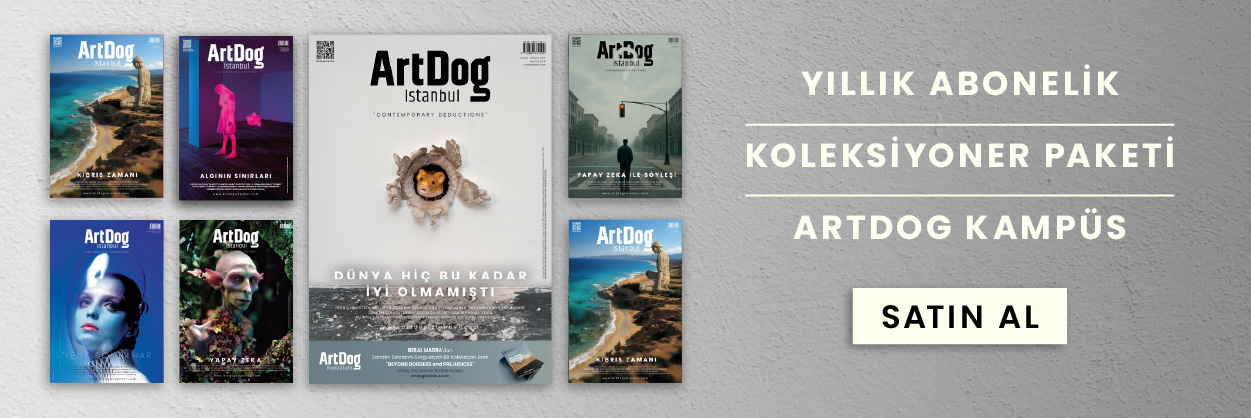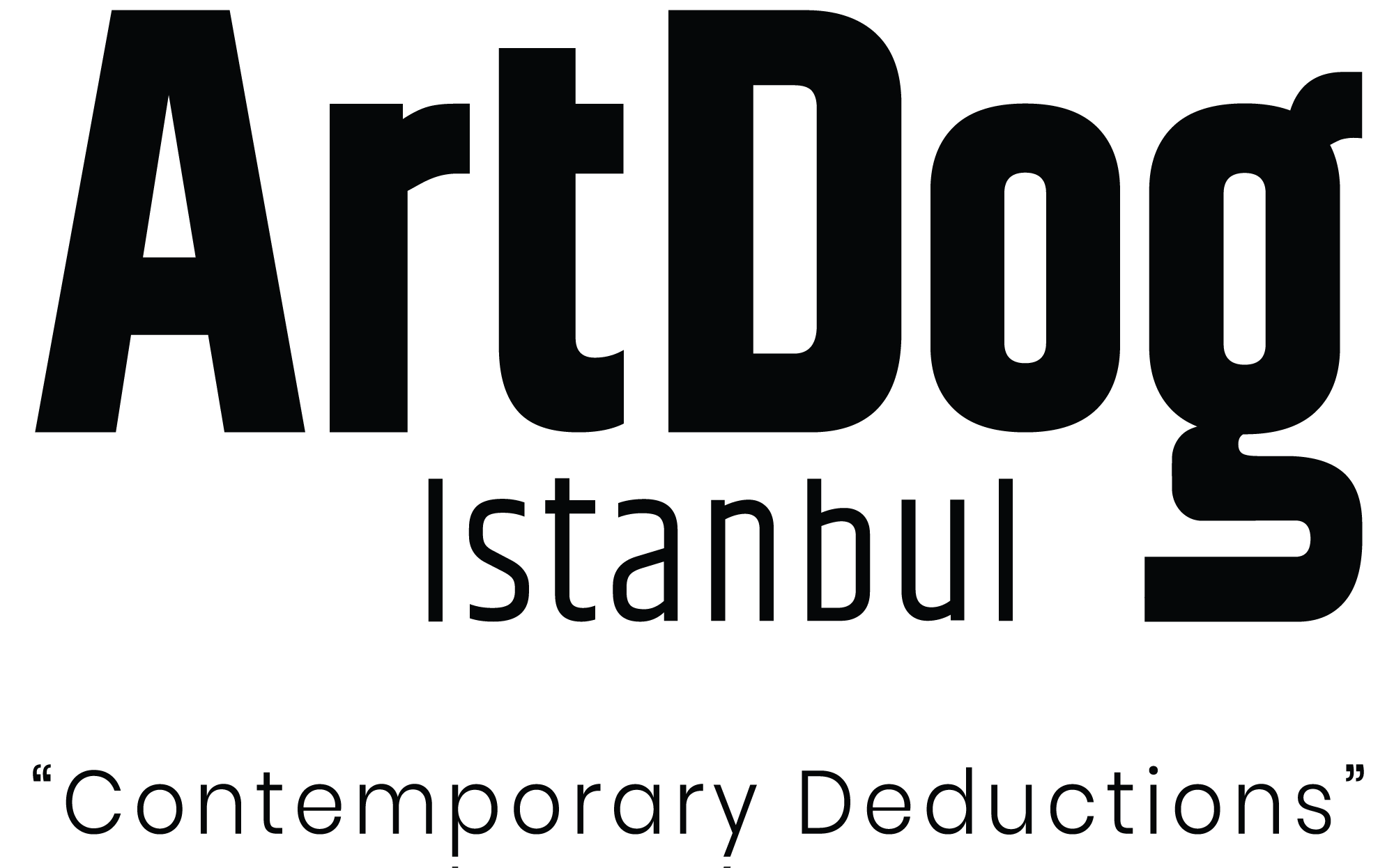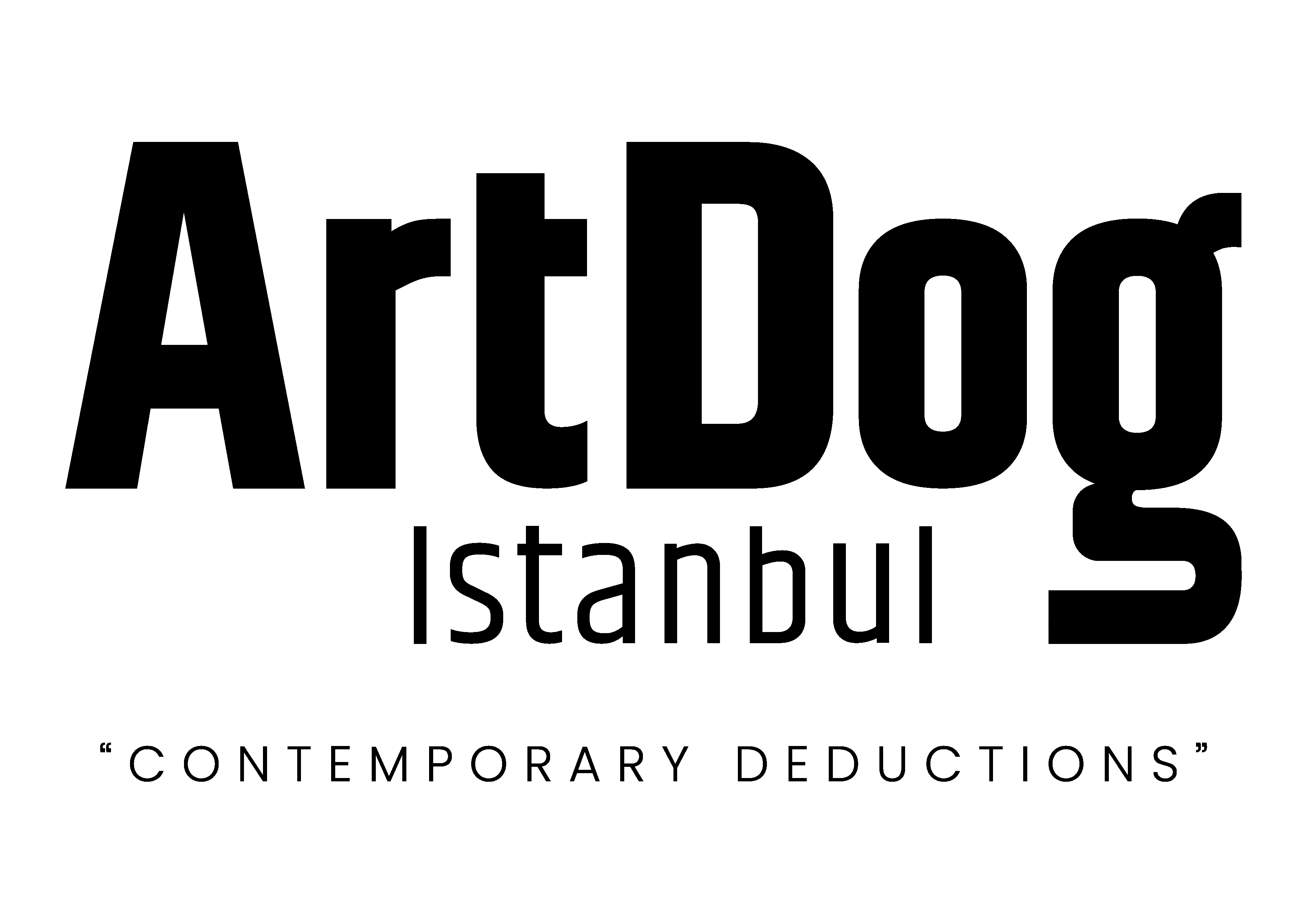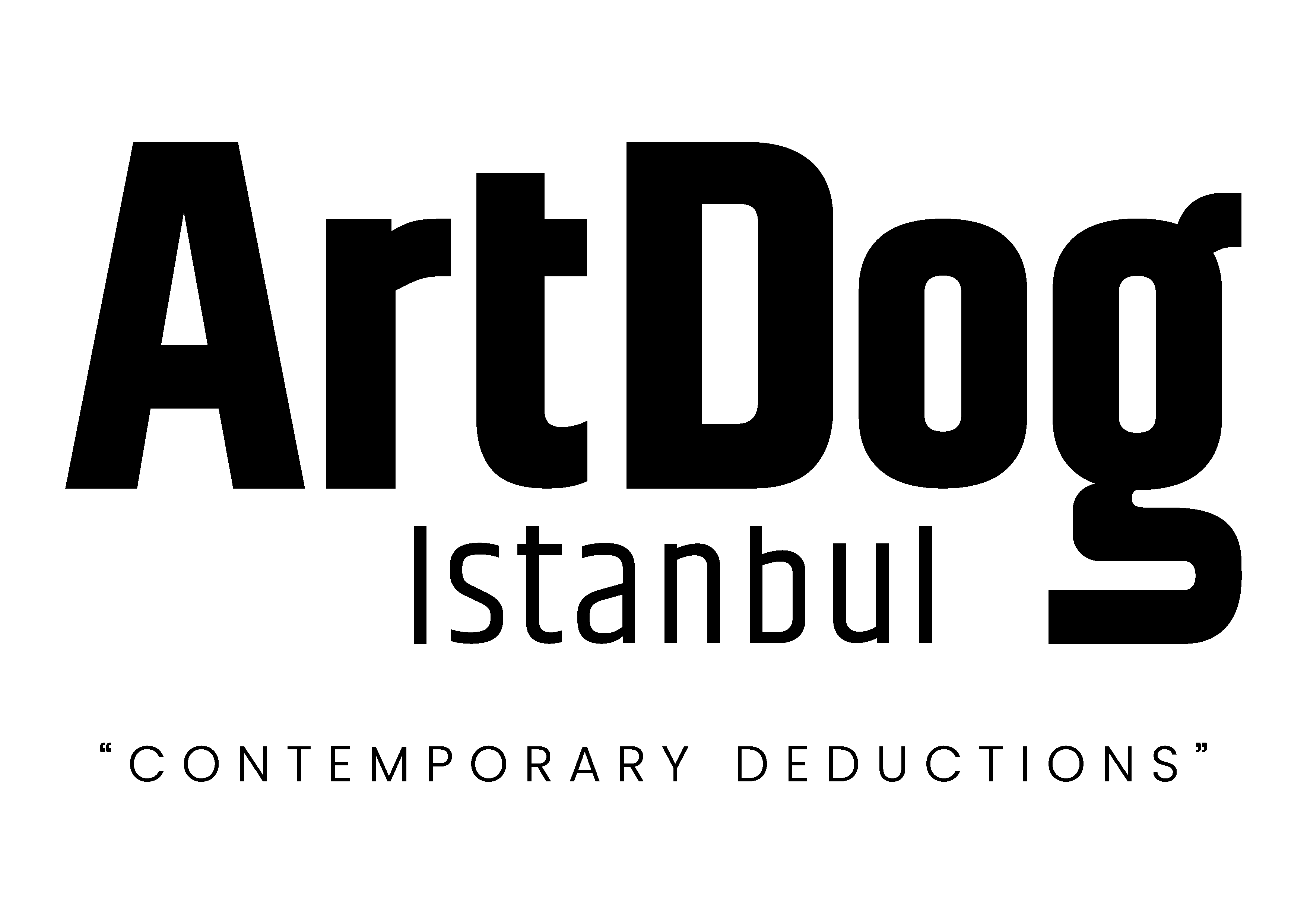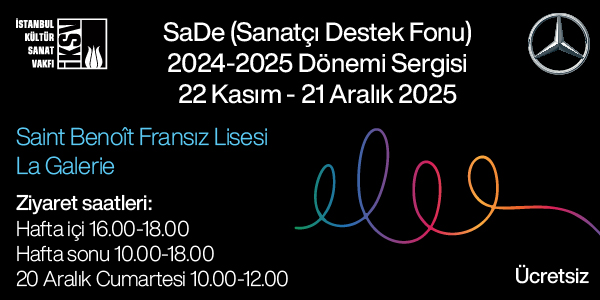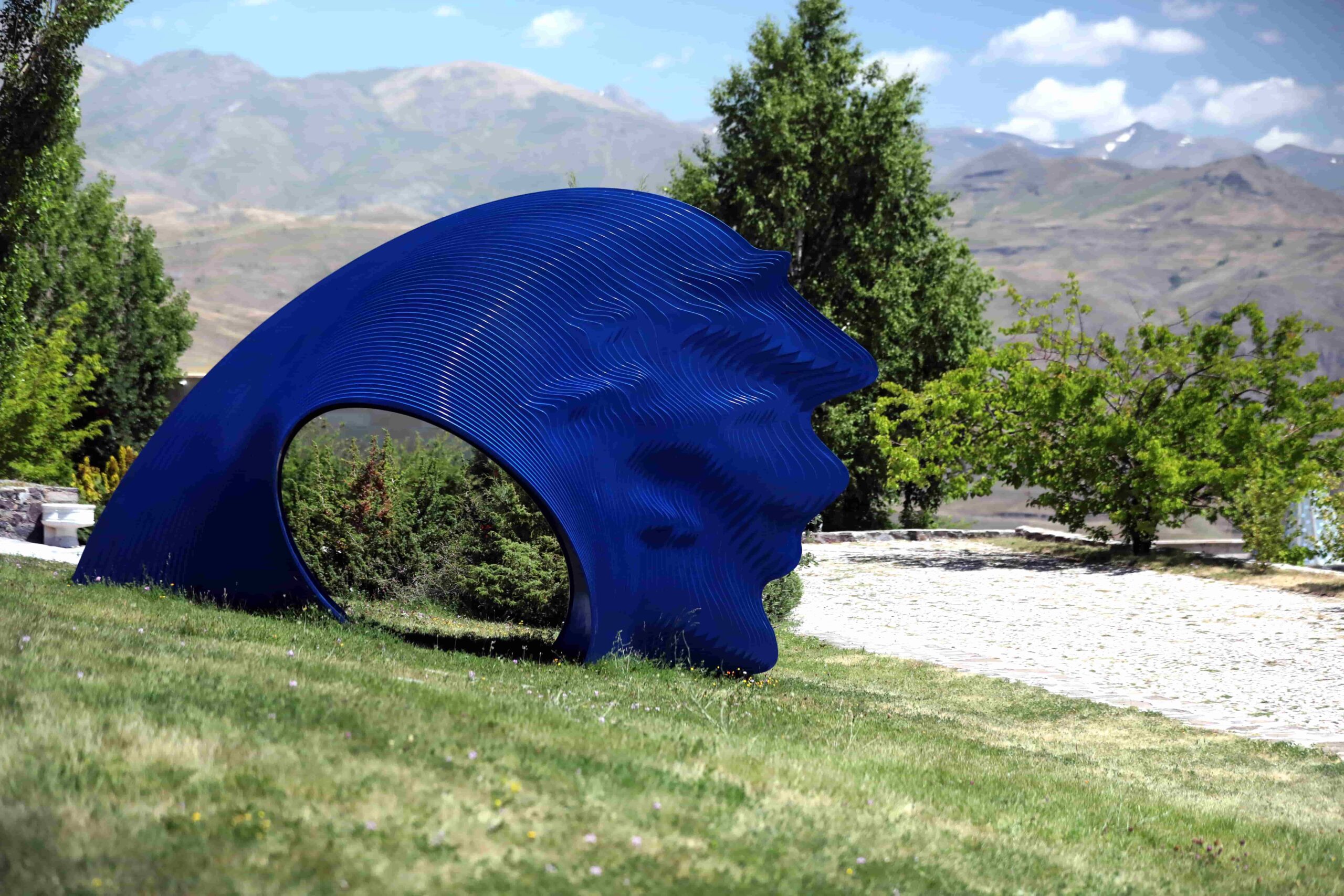Billur Tansel answered our questions about the staged exhibition, which focuses on the climate crisis, of which humans are both the cause and the victims. The exhibition addresses the existential dilemmas of humans who have become disconnected from nature and taken refuge in artificial realities on a philosophical and aesthetic level.
Arkas Art added a new stop to Izmir’s art route by opening its fifth center, Arkas Art Alaçatı, in July 2024. The center, realized in collaboration with the Çeşme Municipality, hosts both permanent and temporary exhibitions. The permanent exhibition features works by Victor Vasarely, one of the important representatives of Op Art, while the temporary exhibition, titled Staged, draws attention to the climate crisis and will be open to visitors from May 29, 2025, to January 4, 2026.
Curated by Billur Tansel, the exhibition questions the fragile relationship between humans and nature through 86 works by 35 artists, inviting viewers not only to an aesthetic experience but also to think and take action. Müjde Unustası, Director of the Arkas Art Center, notes that the exhibition reflects the belief in art’s power to raise awareness. Supported by a variety of events such as conferences, workshops, and artist talks, the exhibition aims to contribute to a sustainable future.
The exhibition, which both reflects the climate crisis and opens up space for alternative visions of the future, brings together art and philosophy. It is staged and draws on philosophical approaches such as Schopenhauer’s understanding of reality and Jean Baudrillard’s theory of simulation. Additionally, the works of Piero Gilardi, an ecological activist and one of the pioneers of the Arte Povera movement, reinforce the exhibition’s intellectual foundation. The exhibition offers visitors a rich content through its archive section, site-specific installations, and interactive activities. Curated by Billur Tansel, Staged can be seen at Arkas Sanat Alaçatı until January 4, 2026.
Let’s start with the name of the exhibition. Staged is a multi-layered title. What can you tell us about how this title came about and how it relates to the fundamental concepts addressed in the exhibition?
The title Staged consists of many layers because its starting point is the complex realities that humans find themselves in today. This word refers not only to theater but also to illusion, representation, artificiality, and fiction. This multiplicity of meanings refers to the contradictory nature of our age.
The realities of the climate crisis have now transformed into a threatening reality that confronts us not only in scientific reports but also in our daily lives. Despite this, humans refuse to see and hear—as if everything were merely a stage set.
The works in the exhibition aim to remind viewers of certain topics and reach them in different ways, sometimes through humor, sometimes through sarcasm, and sometimes through aesthetic constructions. A good example of this is Dutch artist Willem de Haan’s performance video featuring his sculpture Motor House: in this performance, the artist appears to be making an ironic suggestion at first glance as he navigates the canals of Amsterdam in a sea motor he built on the roof of a house, but the message he actually wants to convey is very different. With this performance, the artist aims to prevent the flood disaster that occurred in the Netherlands in 2017 due to the climate crisis, which caused great destruction, from being forgotten, and invites the audience to take action against the threat of this country being submerged in the future.
The performance not only offers a critical perspective but also carries a philosophical call to awakening. It sits somewhere between Arthur Schopenhauer’s conception of the world and Sartre’s notion of the obligation of freedom, reminding us that even as humans get lost in these simulacra, they still have the right to choose.
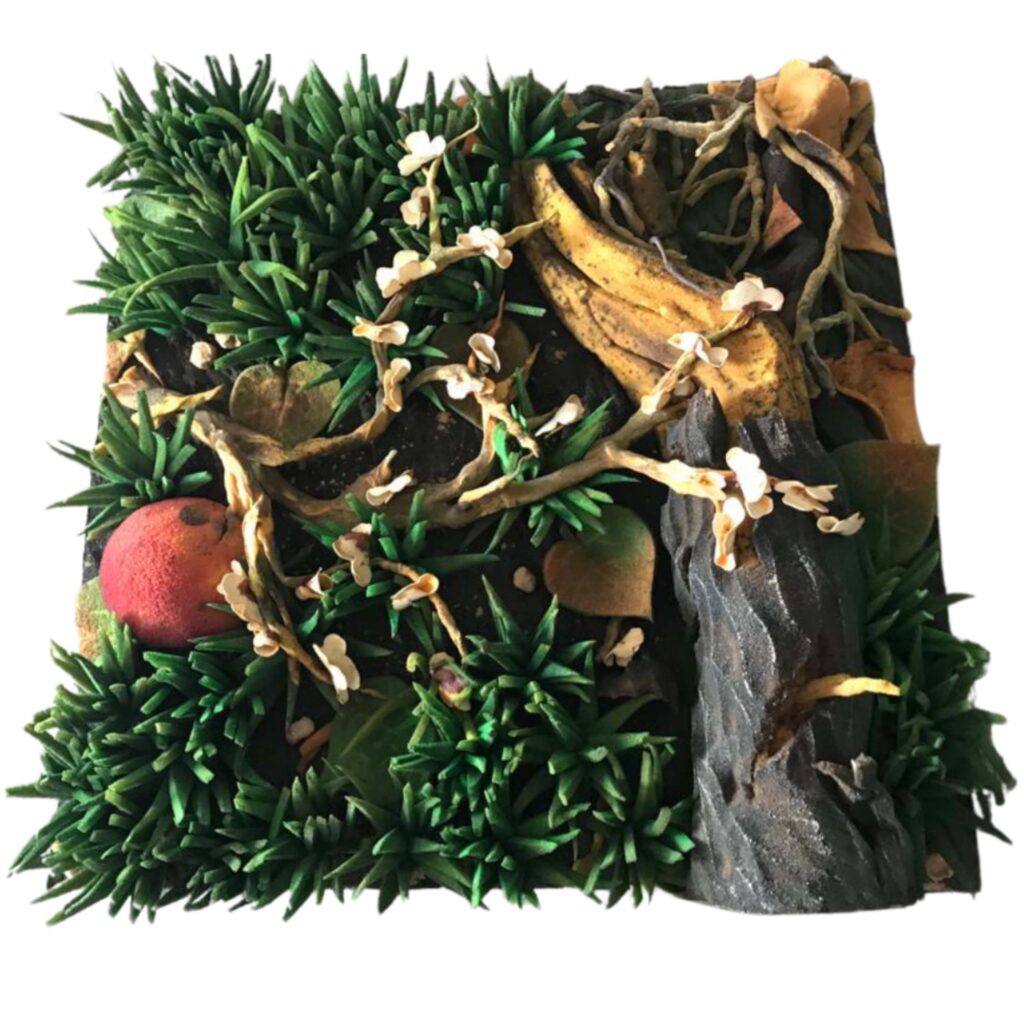
Nature Recast
The artists in the exhibition do not merely depict nature; they imitate it, recast it, sometimes distort it, and sometimes bring it to the stage to draw attention to its absence.
At this point, Nazif Topçuoğlu’s work Natural History offers a striking critique of our current situation: birds killed by humans are placed in a display case, and on top of the display case are ceramic sculptures of these birds. Young students, unaware of the gravity of the situation, pose for photos in front of it. The scene becomes an expression of humanity’s escape from reality, its disappearance within the decor it has created, and perhaps the possibility that it can still take responsibility within all this artificiality.
You state that you do not merely wish to emphasize the climate crisis, but also to underscore the possibility of another scenario. Considering Schopenhauer’s concept of reality and Baudrillard’s theory of simulation, how does the scene you wish to create through art present a reality to the viewer when the nature of reality is so ambiguous?
Questions about what reality is, especially when they find their counterpart in Schopenhauer’s understanding that “the world is my perception” and Baudrillard’s simulation universe, draw us into an uncertain terrain. Reality ceases to be a universal truth; it becomes a production of perception, representation, and even intention.
The staged exhibition positions itself right in the middle of this uncertainty. While referencing issues related to the climate crisis, it also questions the fragility and constructibility of reality.
It Does Not Present a Single Reality
In this exhibition, we do not merely critique the current scene; we also present the possibility of a new scene. Because, as Sartre defines it, humans are not condemned to their fate; they have the freedom to recreate their existence each time. Art also gains meaning at this point: not as a solution, but as a different way of thinking, feeling, and imagining.
The staged work does not present a singular reality to the audience. Instead, it aims to transform the audience from passive witnesses into active thinking subjects by bringing together layered, plural, and contradictory possibilities. The issue here is not what reality is, but what reality we want to contribute to.
With the participation of 35 artists and 86 works, the exhibition is quite extensive. Some of the works address the climate crisis from different perspectives, while others emphasize that an alternative world is possible with the active and constructive participation of humans. However, humans often prefer to play the victim of the destruction they themselves have caused. If we were to summarize the message the exhibition aims to convey to the audience in a single sentence, what would it be?
The staged exhibition serves as both a mirror and a rehearsal: it reflects the current trajectory we are on and rehearses a future that is still being written; it invites the viewer not only to bear witness to the crisis but to take on a role in a stage where they can transform the relationship we have with the planet by synthesizing art, thought, and action.
How do you draw parallels between the tension between nature, imitation, and reality in the art of Piero Gilardi, one of the pioneers of the Arte Povera movement and an ecological activist, whose work Cherry Blossom is featured in the exhibition, and the present day?
Piero Gilardi’s practice represents an artistic understanding that recognized at an early stage that the distance between nature and humanity signifies not only a physical but also an ontological rupture. Imitating nature is not nostalgia in Gilardi’s works, but a warning; it is not aesthetic decoration, but a harbinger of impending absence. The fragments of nature he produces from sponge and polyurethane lead us directly to Baudrillard’s concept of “simulacrum”: feeling the texture of a reality that is not real.
In works like Gilardi’s Cherry Blossom, a contradiction exists between the transience of beauty and the permanence of artifice. The fragility inherent in nature’s own cycle is transformed into a form frozen, fixed, and ultimately aestheticized by human hands. This suggests that nature is no longer something lived, but something to be exhibited. In this context, Gilardi’s works are not only an artistic statement for the consciously responsible viewer, but also a powerful warning letter to the future.
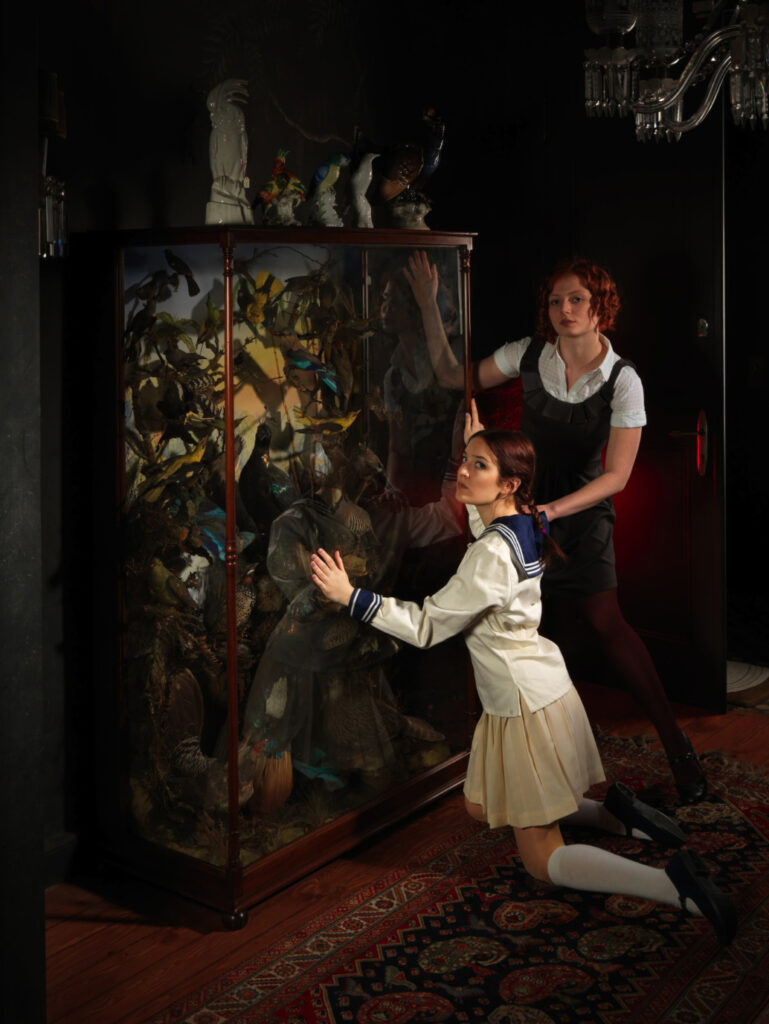
Alongside the accompanying archival space, the exhibition also includes texts and books that explore the themes addressed in the works on view—such as the research findings of forest ecologist Dr. Suzanne Simard on mycelium networks. What role do the archive and library play in your curatorial approach?
Research is of great importance for curatorial projects. Everything originates from and is nourished by it. In this context, the archive and the library serve as the “backstage” of the exhibition. For the exhibition to function as a living project, it is essential that the audience can follow the curator’s research process, step out of the role of mere spectator, take on an active role, and continue their own inquiries. For this reason, a special section has been created in the library of Arkas Sanat Alaçatı for the exhibition. In this space, some of the books that I consulted during my research are presented together with explanatory notes that describe how each book establishes a dialogue with the exhibition.
A Collective Existence
I believe that art is not only a field that appeals to emotions but also a mode of research intertwined with intellectual production. For this reason, Staged is not merely a visual experience; it also incorporates a reading space that invites audiences to think, learn, and deepen their own explorations.
One example is forest ecologist Dr. Suzanne Simard’s book Finding the Mother Tree. Her pioneering research on the mycelium networks that connect trees and plant species in forests not only reveals the extraordinary systems of nature but also offers insights into human society, pointing to the possibility of a collective existence. Such resources strengthen the intellectual foundation of the artistic works in the exhibition while offering audiences a broader context beyond art itself.
How does Alaçatı, as the exhibition site, contribute to the conceptual framework? In what ways does the space itself transform the message of the show?
Staged is not just an exhibition but a proposition of context—and one of the most critical elements of that context is where it unfolds. Alaçatı, with its inspiring natural landscape, winds, and distinctive texture, yet also with its ongoing struggles against urbanization and rapid transformation, provides both a symbolic and critical ground for the exhibition.
Here, the show can be seen less as an “installation” and more as a confrontation: with nature, with destruction, with the artificial, and ultimately with ourselves. Alaçatı, on the one hand, symbolizes the hope of renewable energy with its wind turbines, while on the other, it embodies how consumer culture transforms nature. This contradiction makes the exhibition’s central theme—between reality and simulation—even more visible.
Art often addresses universal human concerns, but many works tend to remain in a passive stance toward the very issues they reveal. How do you see Staged in this regard?
Art is sometimes criticized as a space that merely displays and evokes emotions without sparking action. Yet Staged is not simply about presentation—it is a search for response. The exhibition prioritizes art’s potential to activate thought rather than remain static, as true action often begins with deepened awareness. By synthesizing awareness with knowledge, archives, art, and dialogue, the exhibition proposes not only a theme but also a common ground.
In doing so, Staged invites audiences not merely to witness but to reconsider their own position. It asks people to move beyond a victim mentality and rediscover their potential as subjects. In this sense, it shifts art from the realm of “aesthetic appreciation” into that of ethical responsibility.
Artists featured in the exhibition include:
Ahmet Doğu İpek, Ali Borovalı, Ali Kanal, Antonio Riello, Azade Köker, Bengü Karaduman, Berndnaut Smilde, Borga Kantürk, Burçak Bingöl, Danielle Kwaaitaal, Ergin Çavuşoğlu & Konstantin Bojanov, Ferhat Özgür, Gözde Mimiko Türkkan, Gül Ilgaz, Hayal İncedoğan, Henri Ferdinand Bellan, Ilgın Seymen, İsmail Eğler, Murat Germen, Murat Morova, Murat Yıldız, Nancy Atakan, Nazif Topçuoğlu, Nermin Er, Özgür Demirci, Paul Hodgson, Piero Gilardi, Rose Morant, Selçuk Demirel, Sibel Horada, Silva Bingaz, T. Melih Görgün, Tufan Baltalar, Willem De Haan.

